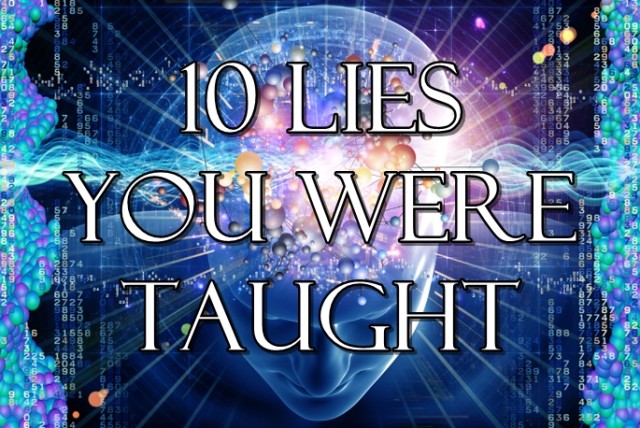
Everybody loves science. Those who say they don’t have not seen how it applies to everything they do. After all, science is simply the study of reality, and from this study we derive facts on everything from physiology to physics. As the most mentally advanced species on this planet, we pride ourselves on just how much we have learned both as a species and individually. Just like most people, when I hear someone make a remark that is not true, facts come pushing out of my mouth like word vomit and I can’t help but correct them.
In the past, people relied on written and verbal communication for education. The modern era—due to all its technological magic— has allowed us to proliferate ideas like never before. Radio, television, the internet: these are now the sources where we gain the most influence. With all this change it comes as a surprise that some memes, which have been around for generations, still exist. This list dispels just a few of these common misconceptions.
Our brains are magnificent computers, designed through a competitive evolutionary process over millions of years and containing about two billion neurons. This is not by chance. The average brain, all of it, is capable of being active at any time. There are certain areas that specialize in different tasks like memory, motor skills, language and reasoning. When in use they light up with activity as extra blood rushes to deliver oxygen, but even unused they still remain alive.
If it were true that there is inaccessible brain power somewhere in there, the areas would atrophy away and humans would evolve with more compact, efficient wiring and smaller heads. It may be more accurate to say that at any given moment you are making use of only a portion of your brain.
How sad and empty our lives would be if this were true. The reality is that humans have far more senses than you would think – somewhere between fourteen and twenty depending on how detailed you want to get. Beyond the traditional taste, smell, touch, hearing, and sight, there are a plethora of other senses that comprise our daily experience. Among some of the lesser known ones are sensors in the bloodstream that alert you when carbon dioxide or sodium levels are too high.
There are also sensors in the brain that indicate vasoconstriction known as a headache. Hunger is a sense, as well as heat, pressure, itchiness, balance, motion and pain. Can you touch your nose with your eyes closed? This is due to sensors in the tendons and muscles of your body letting you know your limbs’ locations. Pretty neat stuff, right?
It’s a shame that websites and public service announcements blatantly state things that aren’t true, are meant to scare and contain false information. There is no denying however that alcohol does affect the brain, and if you’ve ever seen a drunk person then you’ll know what I mean. Your brain communicates internally via neurotransmitters, and the more you drink the more they are inhibited. Speech slurs, coordination goes down and memory fades.
Drinking too much can affect deeper levels of the brain, damaging dendrites and eventually reaching your brain stem. If used sparingly, you’ll feel the rewarding doses of dopamine and improvement in creativity!
- Antibiotics kill viruses.
 Look at the word “antibiotic” and what do you see? “Anti” and “biotic” which loosely translates to “anti-life”. They are meant to kill living things such as bacteria. Viruses unfortunately are not living organisms, therefore cannot be killed by the same methods. They are smaller and simpler being composed of not much more than a shell to hold their DNA. This also makes them capable of surviving in more harsh environments than living organisms. Viruses will seek out healthy cells to infect, turning them into factories that produce more viruses until the cell dies. Our bodies have a sophisticated immune response involving white blood cells that come to identify and deactivate the threat.
Look at the word “antibiotic” and what do you see? “Anti” and “biotic” which loosely translates to “anti-life”. They are meant to kill living things such as bacteria. Viruses unfortunately are not living organisms, therefore cannot be killed by the same methods. They are smaller and simpler being composed of not much more than a shell to hold their DNA. This also makes them capable of surviving in more harsh environments than living organisms. Viruses will seek out healthy cells to infect, turning them into factories that produce more viruses until the cell dies. Our bodies have a sophisticated immune response involving white blood cells that come to identify and deactivate the threat.
If you were to take antibiotics for something like the common rhinovirus, you may actually hurt your body’s ability to fight off the illness. Viruses can’t be cured in the traditional sense either, which is why vaccinations were developed to give the body a mostly harmless taste of a more dangerous disease. The idea that viruses can be killed with antibiotics is especially dangerous because we may soon find ourselves in an epidemic of antibiotic resistance. The development of new antibiotics that work on ever-changing microbes is dwindling due to the widespread use in our culture. So whether it is on your countertop, in your food or on your body, take precautions and know when antibiotics are necessary.
Where is everyone getting this number from, and how are we defining exploration? Does that mean mapping the topography? According to this article, shockingly one hundred percent of the ocean floor has been mapped at around 5 kilometers resolution from satellites, while sonar has mapped ten to fifteen percent at a resolution of about one hundred meters. It’s not superbly accurate, but the ocean is a massive place hidden under crushing amounts of water with a natural abundance of geographical features.
If we’re talking about life forms however, two hundred and thirty thousand of an *estimated* two million have been discovered – just over eleven percent! That number is notably better than a measly five percent, though leaves plenty of up close and personal work to do for future explorers.
Space, the final frontier. It’s big, dark, quiet, and cold. The coldest anything can get is absolute zero, or zero kelvin which converts to -495.67 degrees Fahrenheit. The average temperature in space is about two degrees kelvin. On top of that the pressure in space is so close to zero that any molecule that touches you is negligible, as opposed to 14.7 pounds per square inch on the surface of earth. Despite this huge difference, being exposed to space’s conditions won’t make you explode or freeze instantaneously.
The decrease in pressure can rupture your lungs, sinuses and eardrums if it happens suddenly. Any oxygen in the blood stream will leak out causing hypoxia and depriving your brain of this essential. Unconsciousness will claim you within seconds and an icy death in minutes, but no explosions.
Not according to the LHC Safety Assessment Group. As described in this article, LSAG has conducted a few investigations into the possible outcomes of running a Large Hadron Collider test. The results unsurprisingly tell us what we’ve already seen happen – or not – at the European Organization for Nuclear Research.
No black holes will form, no runaway fusion reactions will occur, and our planet will not be overtaken by proton destroying monopoles. It’s hardly possible given the number of times that particle collisions with just as much or more energy have happened in the past due to natural events such as cosmic rays. So relax, the God Particle comes in peace.
- Christopher Columbus discovered America.
Not exactly. In 1492 he did discover a place he named San Salvador in the Bahamas, as well as Greater and Lesser Antilles, Cuba, Venezuela and the Caribbean starting a slave trade of the natives who already lived there and perhaps later genocide. These lands he believed to be India and China were not what we today consider America.
More to the point, He was preceded by a Norse settler named Leif Eriksson by almost five hundred years. In the year 1000 Leif discovered “Vinland,” what is now Newfoundland in Canada, but left it in much the same way as he found it. History on the other hand is not as straight-forward.
Moreover, the term “discovery” in this case is perplexing. The initial settlement of the continent was driven by Southeast Asians who occupied Australia 60,000 years ago. They then expanded to the Americans in 13,500 years. Colonization of a new part of the world would be considered a “discovery” to most people, but history books don’t label something a discovery until a white person finds it. The folks at College Humor came up with a term for this, “Columbusing.”
- Thomas Edison created the first light bulb.
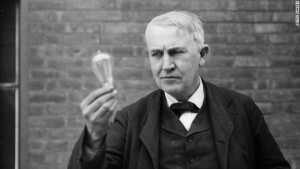 Thomas was not the first to discover the light bulb, or even to create a functioning one. The first arc was created in the year 1800 by English scientist Humphrey Davy. A few (there were numerous others) of the others contributing to the cause of the light bulb were Sir Joseph Wilson Swan and Charles Francis Brush before Edison came on the scene.
Thomas was not the first to discover the light bulb, or even to create a functioning one. The first arc was created in the year 1800 by English scientist Humphrey Davy. A few (there were numerous others) of the others contributing to the cause of the light bulb were Sir Joseph Wilson Swan and Charles Francis Brush before Edison came on the scene.
What he is well-remembered for is his improvements of the bulb which made it last for forty hours, discovered in 1879. Edison later went on to create bulbs lasting over 1500 hours after experimenting with different filaments.
- Once you lose brain cells, they are gone forever.
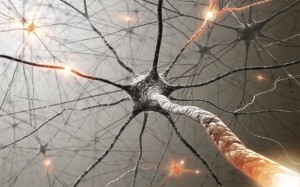 Neurogenesis has long been thought of as a myth. Even as a child I remember hearing, “Don’t hit your head! Once you lose those brain cells they won’t come back.” Recently scientists have uncovered a long kept secret of the mammalian brain. Neurons are highly complex cells, having many connections to the cells surrounding them. There are stem cells in certain part of the brain that can grow into tissue without disrupting the circuits around them, aiding in neuroplasticity in the event of an injury. Even novel experiences can form new cells allowing us to adapt to new environments. This means that every moment you live is a chance to enhance your brain!
Neurogenesis has long been thought of as a myth. Even as a child I remember hearing, “Don’t hit your head! Once you lose those brain cells they won’t come back.” Recently scientists have uncovered a long kept secret of the mammalian brain. Neurons are highly complex cells, having many connections to the cells surrounding them. There are stem cells in certain part of the brain that can grow into tissue without disrupting the circuits around them, aiding in neuroplasticity in the event of an injury. Even novel experiences can form new cells allowing us to adapt to new environments. This means that every moment you live is a chance to enhance your brain!

Ellen Ball is a co-host of Non-Partisan Liberty for all and a guest columnist for Think About Now


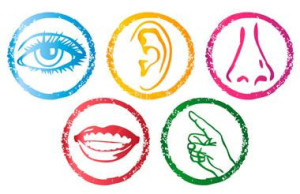
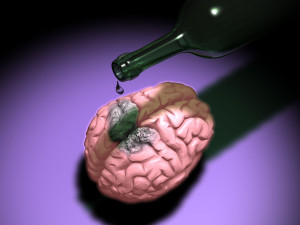
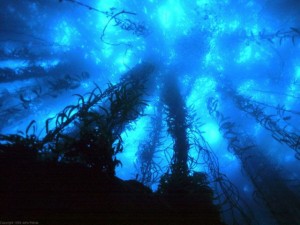
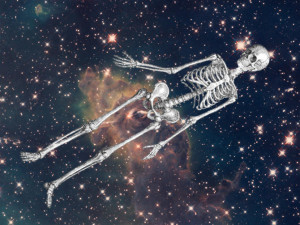
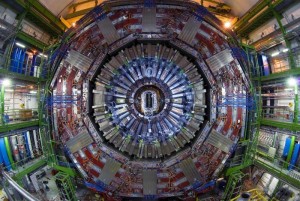







I like reading through an article that will make people think.
Also, thank you for allowing me to comment!
I have read so many content about the blogger lovers however this post is in fact a good paragraph, keep it up.
Good way of telling, and nice post to get information regarding my presentation subject, which i am going
to present in school.
Personal mastery helps everybody understand that life
is full of opportunities for expanding our vision and skills,
until later on we succeed.